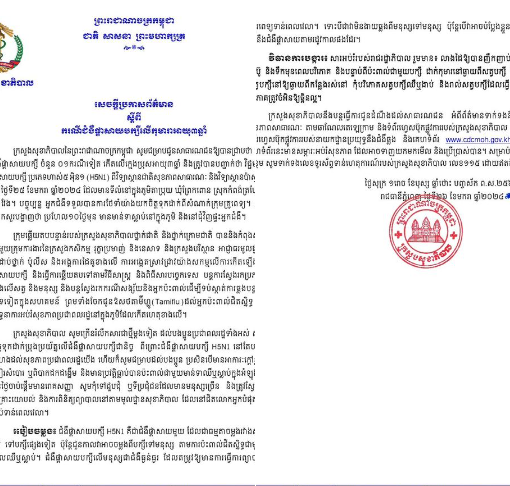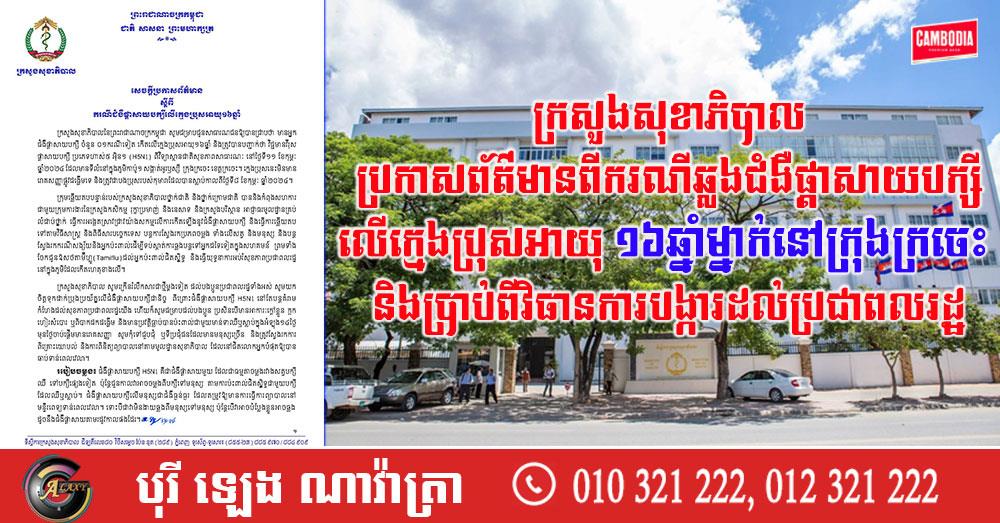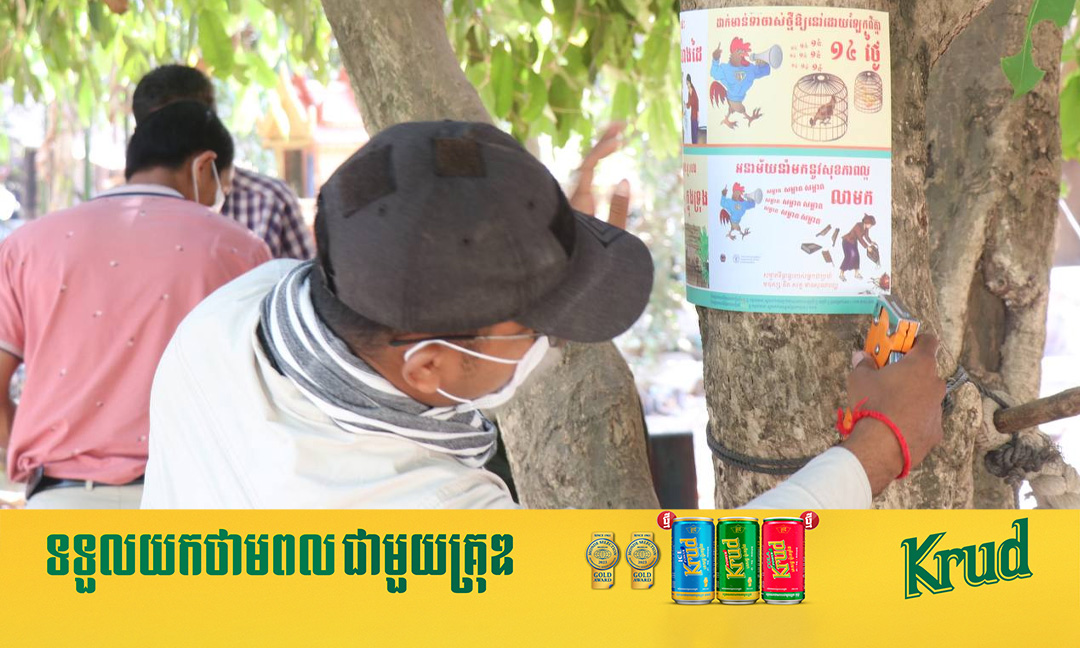A three-year-old boy from southeast Cambodia's Prey Veng province has been confirmed for H5N1 human avian influenza, the first case of this year, the Ministry of Health said in a statement on Friday.
"The boy was confirmed positive for H5N1 bird flu virus by the National Institute of Public Health and the Pasteur Institute in Cambodia on Thursday," the ministry said. "The patient is currently receiving intensive care from a team of doctors."
Investigations from the patient's village found that chickens and ducks had died in the village and around his house about 10 days ago, the ministry said.
"A team of health experts is investigating the source of the infection and are examining any suspected cases or people who have been in contact with the victim in order to prevent an outbreak in the community," the ministry added.
Tamiflu (oseltamivir), an antiviral drug to prevent the bird flu from spreading, was also handed out to people who had direct contact with the boy, the ministry said.
H5N1 influenza is a flu that normally spreads between sick poultry but can sometimes spread from poultry to humans. Its symptoms include fever, cough, runny nose, and severe respiratory illness.
From 2003 to date, there were 63 cases of human infection with H5N1 influenza, including 41 deaths in the Southeast Asian country, according to the ministry.
"The boy was confirmed positive for H5N1 bird flu virus by the National Institute of Public Health and the Pasteur Institute in Cambodia on Thursday," the ministry said. "The patient is currently receiving intensive care from a team of doctors."
Investigations from the patient's village found that chickens and ducks had died in the village and around his house about 10 days ago, the ministry said.
"A team of health experts is investigating the source of the infection and are examining any suspected cases or people who have been in contact with the victim in order to prevent an outbreak in the community," the ministry added.
Tamiflu (oseltamivir), an antiviral drug to prevent the bird flu from spreading, was also handed out to people who had direct contact with the boy, the ministry said.
H5N1 influenza is a flu that normally spreads between sick poultry but can sometimes spread from poultry to humans. Its symptoms include fever, cough, runny nose, and severe respiratory illness.
From 2003 to date, there were 63 cases of human infection with H5N1 influenza, including 41 deaths in the Southeast Asian country, according to the ministry.














Comment